THE PROSPECTOR

FEATURES
Ethan Chu’s Passion for Aviation
pg.12
SPORTS
Scoring in Subjective
Sports
pg. 20
THE NORMALIZATION OF ALL-NIGHTERS
Exploring the prevalence of all-nighter culture and its health detriments




Ethan Chu’s Passion for Aviation
pg.12
SPORTS
Scoring in Subjective
Sports
pg. 20
Exploring the prevalence of all-nighter culture and its health detriments


editors-in-chief
Amrita Brar
Miya Widman
Nitya Dhulipala
news editor
Saba Sharifolnasabi
opinions editor
Ashley Qi
features editor
Celine Zhang
investigations editor
Madalina Zheng
sports editor
Katie Mak
lifestyles editor
Atrisa Rahgozar
postscript editor
Cathy Wu
copy editors
Laura Chen
Nikhil Krishnaswamy
Yeechen Pang
website manager
Anshika Jain
social media managers
Nimrit Gandhi
Rosa Lee
business manager
Victoria Hunt
online editors
Aaron Luc
Angela Kim
Chloe Choe
Evelyn Liao
Mason Lien
Rebecca Wawda
Scarlett Guy
Zain Haseeb
writers
Alexander Liu
Benjamin Liu
Brian Kuo
Hailey Ryu
Joe Zheng
Joyce Lee
Katie Kim
Noah Kang
Shaona Das
Dear Reader,
Even with the sun shining and the flowers in full bloom, this time of year has become synonymous with the many anxieties the average high school student faces. If you’re looking to ease some of your burdens, we invite you to take a break from the chaos of life and take a flip through some articles that may pique your interest!
On page 8, Anshika Jain and Chloe Choe dissect the ethicality of historical fiction and whether authors reserve the right to alter real-life events, using examples from Cupertino High School’s very own literature curriculums.
As the senior class of 2025 steadily approaches graduation, Rebecca Wawda, Joyce Lee and Evelyn Liao examine various alternatives to four-year college on page 16. From joining the military to attending trade school, these options challenge the stereotypical path that the Bay Area mindset tends to favor.
In the midst of the spring sports season, Aaron Luc shares the journey of the Prospector’s March 2025 Athlete of the Month, Prutha Bharadwaj. From the CHS gym to the regional stage, Bharadwaj has left an indelible legacy on the history of badminton at Cupertino.
advisor
Ann Shriver-Peck
Editorial Policy
“The Prospector” is an open forum of expression for student editors to inform and educate their readers. It will not be reviewed by or restrained by school officials prior to publication or distribution. Advisors may and should coach and discuss content during the writing process.
The staff of “The Prospector” seeks to recognize individuals, events and ideas and bring news to the Cupertino community in an accurate, professional and unbiased manner. “The Prospector” will not avoid publishing a story solely on the basis of possible dissent or controversy.
If you believe an error has been made or wish to have your opinion expressed in “The Prospector,” please contact us via mail or email. Letters sent become the sole property of “The Prospector” and can be edited for length, clarity or accuracy.
“The Prospector” editorial board reserves the right to accept or reject any ad in accordance with its advertising policy.
Contact Us:
chsprospector@gmail.com
The Prospector
10100 Finch Avenue Cupertino, CA 95014
This issue, our first-time editors took the reins in producing thoughtfully arranged spreads and detailed articles. We are proud to share these valuable stories and even prouder to showcase our staffers’ hard work.
P.S. Keep an eye out for the hidden shamrocks in each section!
Lots
of love,
Amrita Brar, Miya Widman, Nitya Dhulipala

















Exploring Mosaic America and its approach to planning Women's History Month celebrations














NITYA DHULIPALA
editor-in-chief




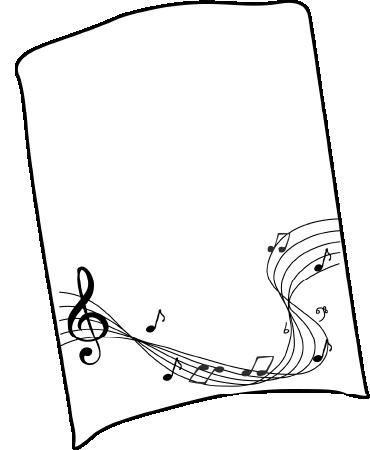
Complete with diverse vendors, cultural performances and traditional musicians, organizations spared no expense when it came to the Women’s History Month celebration held on March 22, 2025, at History Park San Jose. This event was co-curated by Mosaic America, History San Jose, La Raza Historical Society, Japanese American Museum of San Jose, Chinese Historical and Cultural Project and other partners. The celebration, and Mosaic America as a whole, is about more than just honoring women — it is about embracing the diverse stories, cultures and contributions that make up our shared history.
For Mosaic America, pulling off an event like this took time,











all women, right?” said Mosaic America founder and Chief Product Officer Priya Das. “That includes [...] storytelling from all of the diverse cultures. That’s when they turn to Mosaic America.”


trust and intentional outreach. The organization approached this project by asking themselves whether women from every background felt considered and included. Simply acknowledging women as a whole is an inadequate approach to providing them the celebration they deserve.
“To have any event that honors the contributions of women, you have to talk about


Because this event only occurs annual ly, the organization strives to in- volve as many groups as possible, consequently increasing the planning time. Ensuring that ev ery individual feels represented is a task easier said than done. Preparation for this event spans months and involves meticulous planning and coordination with vendors.
As nonprofits are often understaffed, Mosaic America faces a challenge in creating and sustaining momentum with their various projects.
Said Das, “Finding vol-
unteers that are like-minded and who [also want] to do the outreach, make the time, make the energy, understand what it takes to be welcoming of different groups. That is the challenge.”
Mosaic America was founded on the belief that communities thrive when people step outside of their own circles and learn from one another’s stories. Previously, there weren’t many organizations that focused on bridging groups share] on the things that are dif between the groups, so that each can understand and



“That is why Mosaic America was formed. What we felt was that, if we are all living in a place, then we have to


live like neighbors. That means we share in each other’s experiences, be they joyous or sorrowful. [...] So there doesn’t need to be a reason for us to stay within our groups, so to speak.”
A large part of this event centers around celebrating women as the storytellers and keepers of culture.
“The onus and the responsibility of passing on the culture from generation to generation has historically been with [...] women, and so they are also the keepers of the stories of every culture,” Das said.
To ensure every community feels truly represented, Mosaic America does not limit artists and performers to a confined space or time slot. They ask their contributors: What do you need? Whether it is a 50-by-50foot stage for a dance performance or an intimate setting for a spiritual tradition, they work to make that happen.
Mosaic America is largely
run by women, and uplifting underrepresented voices is woven into everything they do.
“Mosaic America is almost 80 to 90% women. It was started by women and is run by a mostly [female] team. And so it just comes naturally that we think about women and representing them,” Das said.
It has always been important for Mosaic America to recognize the roles women have played throughout history, regardless of how large or small.
Said Das, “Sometimes [women] feel like, ‘Oh, we just played a small role in whatever happened, right?’ But if that role doesn’t get counted, then it’s lost to history. [...] You can think of it as a soccer game. [...] The spectators cheer people on, there is the captain, there is the coach, there is the referee. Each of us plays a role [worth counting]”





Exploring how the Trump Administration’s new policies will impact high school students across the country
AMRITA BRAR
amilies across the nation gathered around their televisions on Jan. 20, 2025, watching as Donald Trump was sworn into the White House for a second term as president of the United States. In the weeks since his inauguration, President Trump has implemented several new policies that have the potential to profoundly reshape the resources available to students at Cupertino High School and be-
Since Jan. 20, over 8,000 government and military websites have been pulled from the internet, following a series of executive orders passed by the Trump administration. Officials have stated that these orders are intended to streamline federal government operations and reduce the size and budget
of the existing government to increase its efficiency. In turn, layoffs and dismantling in various federal sectors have become commonplace.

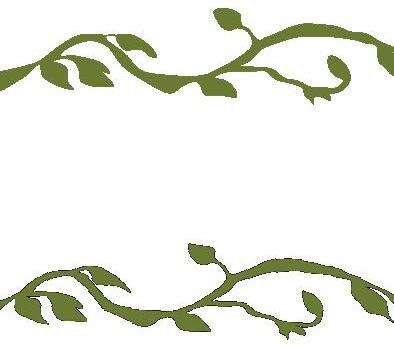
The national parks sector faced significant staff shortages and reduced services in recent weeks. This has resulted in visitor centers closing down, cleanliness and maintenance deteriorating in many areas of the parks and tourism profits decreasing for local communities. Environmental experts have also voiced concerns that these changes may contribute to the rising risk of natural disasters such as wildfires, as well as loss of plant and animal biodiversity. Keeping these parks orderly is crucial in ensuring the well-being of the land and the organisms that inhabit it, and the recent budget cuts in the federal parks sector obstruct this goal. With California being home to the largest number of national parks in the country, these policies directly impact residents across the state.
“[The layoffs are] a formula for disaster,” said Lincoln Larson, associate professor of
parks, recreation and tourism management at North Carolina State University in an interview with CNR News, an online news site managed by the Office of Marketing and Communications at NC State’s College of Natural Resources. “Whether it’s a lost hiker in a wilderness area that couldn’t be found or a home burned down by a wildfire that couldn’t be extinguished, it’s only a matter of time before bad things start happening due to the lack of staffing.”
Many parts of the Environmental Protection Agency’s web page have also been removed, beginning in late January. Specifically, most mentions of climate change, fossil fuel emissions and scientific information have been wiped. Although the EPA stated that they could not comment on the changes being made or the motives behind them, the removal of information began shortly after President Trump issued an executive order calling for the expansion of the oil, gas and coal economies — all of which are known contributors to global warming. This information being purged


the federal government shifting its stance and policies towards how concerns around climate change are being addressed, absolutely,” Stavis said.
In addition to the environmental sector, many federal health agencies faced pushback from the Trump administration. Public information regarding gender identity and abortion, for example, has been eradicated from hundreds of sites. Even colleges such as Columbia University and Louisiana State University, as well as large interna - tional corpo - rations such as Walmart and Amazon, have aban - doned any mention of their Diversity, Equity and Inclusion policies online. DEI policies emphasize an organization’s commitment to accepting each individual, regardless of race, religion, social class, gender identity or sexual orientation. This erasure marks a critical turning point in the censorship of public information accessible to students and employees nationwide.
Trump explained his reasoning in a statement on the official White House website.
Stated Trump, “Imprinting anti-American, subversive, harmful and false ideologies on our Nation’s children not only violates longstanding anti-discrimination civil rights law in many cases, but
usurps basic parental authority.”
Although the president’s new policies may potentially alter the future of high school curriculums in the next four years, there are still a variety of other resources students can utilize in place of government agency sites.
“On a state level, California continues to be a leader in climate awareness,” said Stavis. “So we have a lot of state-level websites that are still intact and we also have a lot of universities that put out good information [for students to access].”
In terms of climate information specifically, students can refer to accredited institutions such as Nature Research — an organization that publishes a monthly academic journal titled “Nature Climate Change” — or Sustainable GW, a research initiative created by students and professors at George Washington University. In terms of gender-affirming resources and abortion information, individuals can refer to a variety of websites including Stanford Health Care, The Trevor Project, Johns Hopkins Medicine and Planned Parenthood

ANSHIKA JAIN, CHLOE CHOE website manager | multimedia editor
When opening a book, one can meet words that transport one back by years. But is the story providing a glimpse of what life was like, or is it falsifying reality?
tion is a long-debated topic, with many suc cess ful works of literature and cine ma having faced criti perpetuating misleading narratives. While authors have the artistic license to deviate from fact for creative purposes, there should be a limit to ensure that
these narratives are not misrepresenting historical timelines. Because writers have the power to shape public perception, they are responsible for avoiding the falsification or exaggeration of events.

WHAT WE LOOK FOR IN FICTION IS A REFLECTION OF REALITY, NOT TRUTH.WHENITCOMESTOTHEETHICS OF STORYTELLING, THE AUTHOR HAS THE RESPONSIBILITY TO BLEND REALITY WITH IMAGINATION AND COMMIT TO REPRODUCING TRUTH. LYNN CHEN “ ”
Cupertino High School students are introduced to historical literature throughout their curriculum, with “In the Time of the Butterflies” by Julia Alvarez being one of the assigned readings in the World Literature class. Because the book portrays the real-life story of a revolution against a dictator, the ethics of presenting the event through fictionalized literature is debated.
An author’s credentials to write historical fiction significantly
impact the narrative. The distinction lies between narrators who have had a direct personal connection to the event like Dedé Mirabal, one of the main characters of “In the Time of the Butterflies,” versus those who rely on extensive research but lack relevant experience. These backgrounds shape the authenticity of the story, influencing the audience’s perception. Authors without a direct connection to the event may choose to spotlight fictional characters instead of centering the story around real people.
It may seem like directors and authors should have the power to bend reality to fit their narrative — after all, historical fiction is still fiction, and readers should not take everything at face value. Sometimes, altering the facts or timeline can help readers discover underrepresented perspectives or provide more reasoning for a person’s actions.
“What we look for in fiction is a reflection of reality, not truth,” World Literature teacher Lynn Chen said. “When it comes to the
ethics of storytelling, the author has the responsibility to blend reality with imagination and commit to reproducing truth.”
“Titanic,” one of the highest-grossing films of all time, has faced criticism for romanticizing a real-life tragedy. The nephew of William Murdoch, an officer of the ship, objected to the film’s portrayal of Murdoch’s death as a suicide, arguing that it was an inauthentic depiction that damages his heroic reputation. Said Murdoch, “If someone says to you somebody in the family committed suicide when he hadn’t, you take objection,” in an interview with British Broadcasting Corporation News.
While altering minor details might be necessary at times, erasing a major part of the story may result in misrepresentation of those with a direct connection to the event. Therefore, authors have a responsibility to avoid perpetuating untruthful narratives.
An author’s note or similar warning can help clear up any historical inaccuracies by elaborating on the true events and why the writer felt the need to make the change. This way, the author ac-
cepts the responsibility of sharing knowledge of historical events to readers and acknowledging any changes that deviate from reality.
Due to the nature of the genre, viewers are more inclined to believe that events illustrated in historical fiction are factual. Conversely, traditional fiction generally portrays completely fabricated events.
The subset of historical fiction that intersects with fantasy also incites the question of whether the lines between fact and fiction are blurred if the story already contains non-realistic elements.
Chloe Gong’s “These Violent Delights” intertwines gang violence and political unrest in 1920s China with a monster that releases bugs. While this latter part of the plotline is entirely a work of imagination, the author still depicts the atmosphere and setting fairly accurately, with a few changes in timeline and landmarks to accom-
modate the monster’s attacks. In this case, adding fantasy to the book did not take away from its historical elements. Additionally, the main characters of the novel were created by the writer and were not inspired by real people or meant to represent real people, giving the author the flexibility to play around with their relationships, emotions and desires.
One must recognize the importance of balancing fact with fiction when writing, reading or watching historical fiction. Writers should indulge in this media with the awareness that the events listed in the story are not a fully accurate representation of what actually happened and may differ largely from the true events. As long as stories are primarily based on fact and do not falsify any potentially harmful information, this genre can be a great read or watch
CELINE ZHANG, MADALINA ZHENG features editor | investigations editor
In December 2019, sculptor Maurizio Cattelan duct-taped a banana to a wall. It sold for $6.2 million, making headlines world wide.
Cattelan, whose other works include a golden toilet titled “America,” may not have expect ed his work to spark global contro versy. However, the piece — aptly dubbed “Comedian” — cre ated a rift in the art community. While it received praise for its originality and humor, critics of “Comedian” re fused to consider it art, citing its apparent lack of meaning and creative technique.
Though eccentric, Cattelan’s work was not unprecedented. In 1917, French artist Marcel Du champ purchased a porcelain urinal from a plumbing store, titled it “Fountain” and submit ted it to an art exhibition. The piece is widely re garded as the earliest example of concep tual art, or artwork whose underlying idea or purpose matters more than its visual appearance.

a practical joke, and critics described it as crude and absurd. After all, the piece contradicted many well-established artistic values, such as skill and aesthetic appeal.
Both “Fountain” and “Comedian” raise the question — what defines art? Are visual beauty and technique essential, or is the act of creative expression enough?


Lee Akamichi is the founder of Akamichi Studio Prep, an organization that educates high school students on the principles of conceptual art. Said Akamichi, “[It’s] the ability to [make] connections that were previously unseen by everybody else,
A lesser known example of conceptual art — “‘Untitled’ (Portrait of Ross in L.A.)” by Félix González-Torres — challenges the idea that meaningful artistic expression requires technique. The 1991 piece, a colorful pile of candy, acts as a homage to González-Torres’s late partner, Ross Laycock. It also provides social commentary regarding the Acquired Immunodeficiency Syndrome epidemic, which peaked in the early 1990s. thereby [expand] our understanding of what art could be.”


This concept was hardly well-received initially — the exhibition dismissed “Fountain” as
The interactive artwork’s initial weight of 175 pounds represents Laycock’s weight prior to his ill ness. The pile gradually loses weight as observers remove can dy, symbolizing the deterioration of Laycock’s health due to AIDS. In addition, viewers’ willingness to take candy parallels the public in difference towards the AIDS crisis,
“ ”
[‘COMEDIAN’ CREATES] A DIALOGUE, EITHER BETWEEN TWO PEOPLE OR INSIDE THE PERSON’S HEAD. WE NEED PEOPLE TO BE MORE THOUGHTFUL AND LESS COMFORTABLE SOMETIMES, BECAUSE WHEN YOU’RE COMFORTABLE, WHAT’S TO CHANGE?
LEE AKAMICHI
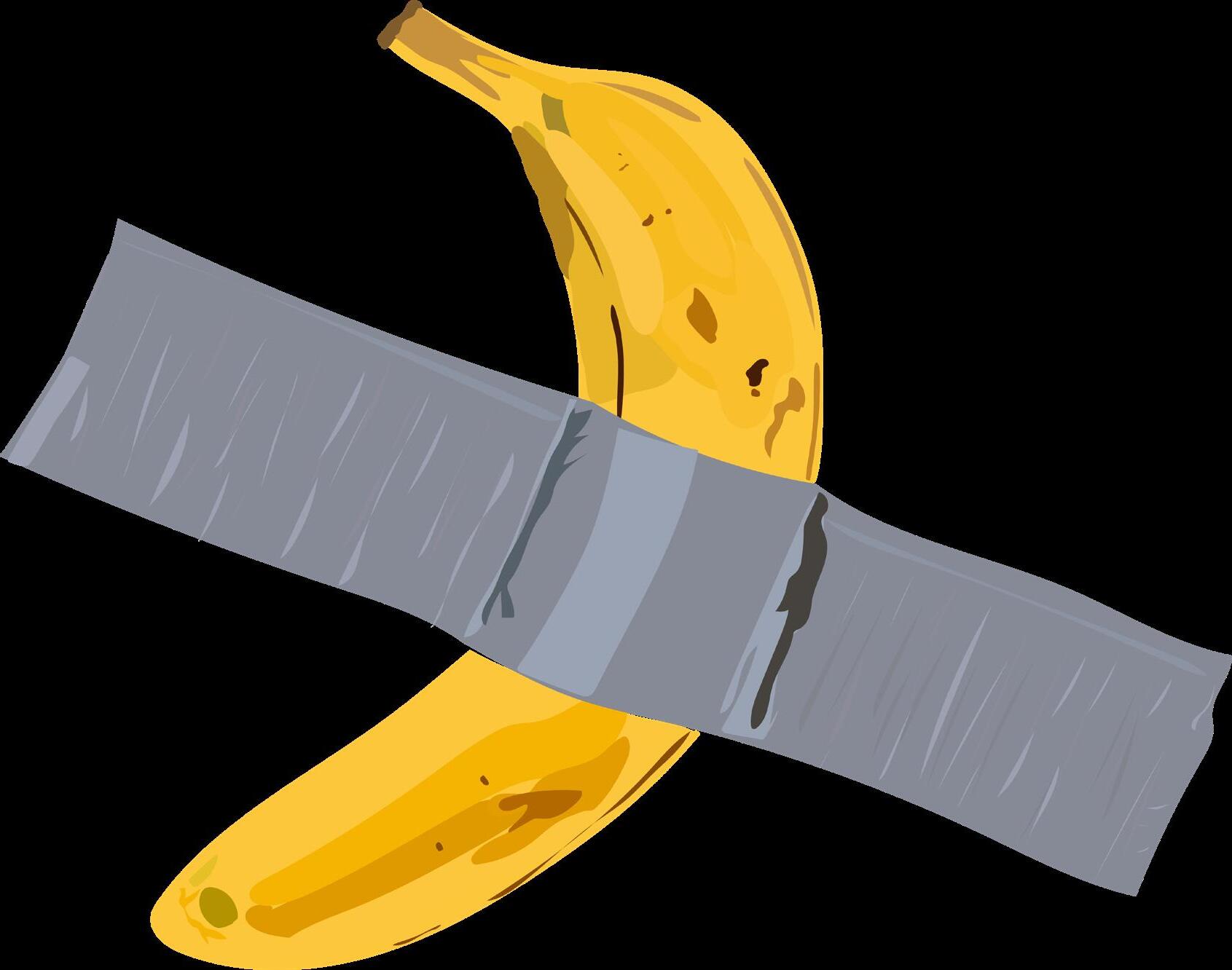
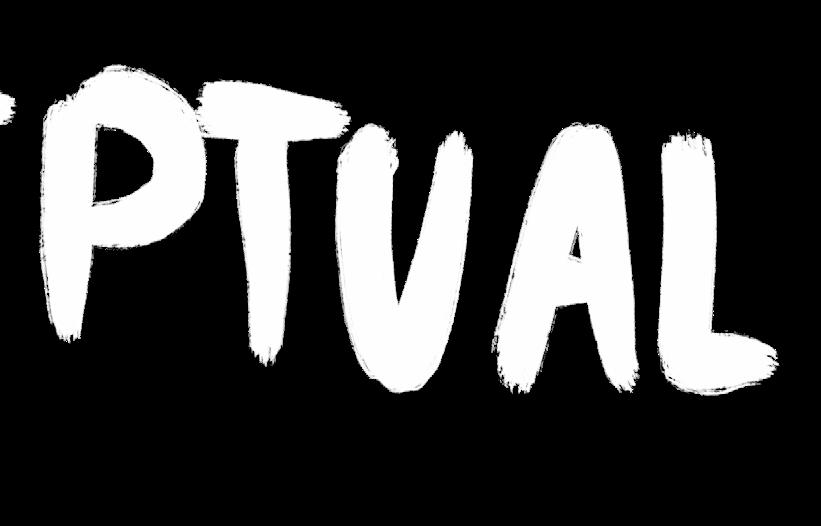
Duchamp, intrigue view ers when presented as art. Pieces like “‘Untitled’ (Portrait of Ross in L.A.)” and
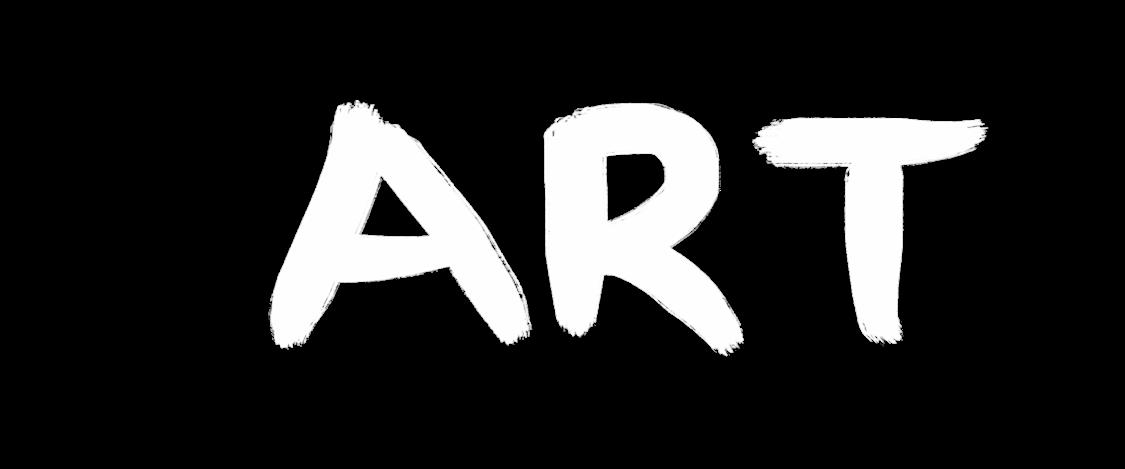
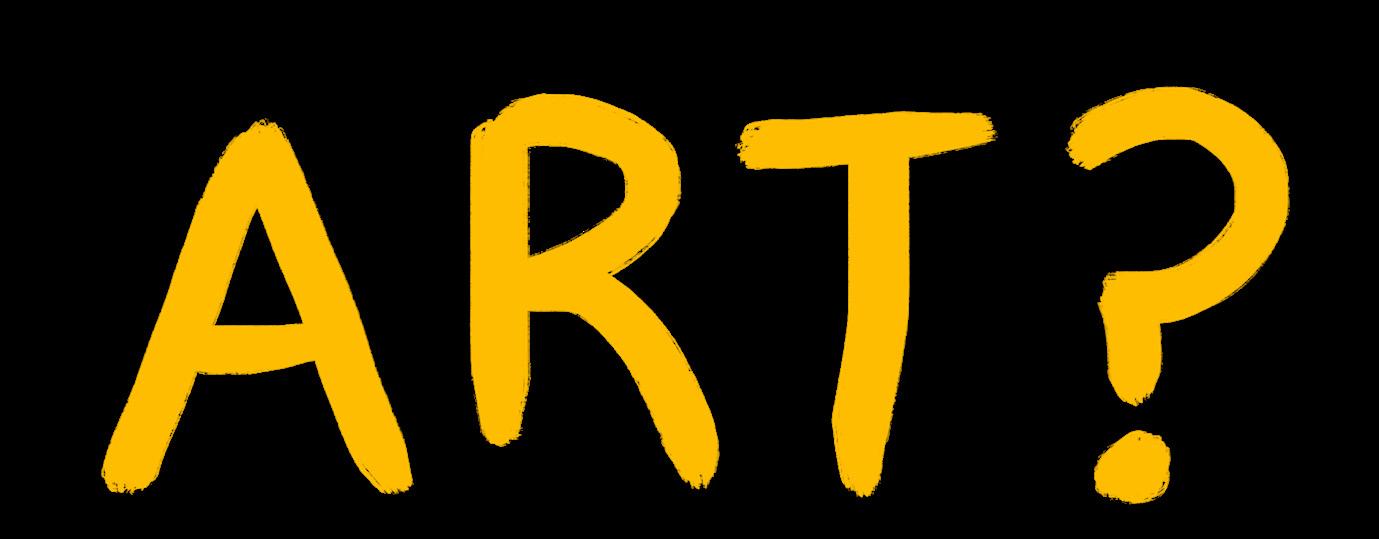
Discussing what qualifies as a piece of art
fortable, what’s to change?”
Creating art is not solely a matter of skill, nor is art measurable by restrictive criteria. Instead, art should be evaluated for its creativity, purpose and ability to provoke thought or emotion.
Said Cupertino High School art teacher Amber Steele, “It takes a ton of skills to do photorealism, but I think it takes a different, maybe more important skill to figure out where to take artistic liberties [and] communicate emotional expression.”
After all, a banana and duct tape are not worth millions of dollars — but originality and ingenuity are

ALEXANDER LIU, KATIE KIM writers
Five hundred tons of metal hurtled over Cupertino High School senior Ethan Chu’s head. As another airliner took off the runway, Chu observed its deafening roar, watching the fuselage, engines and wings flash by in an instant. Later, in his garage, he began recreating the same jet on a smaller scale. Since November 2023, Chu has been building a seven-foot-long remote-controlled plane from the ground up, a miniature Boeing 767-300ER jet.
Chu has been plane-spotting since middle school, going to special parks near airport runways with his father to watch planes take off. “If you’re right next to the planes, you can feel the jet blast and the wake turbulence [...] it kind of rumbles through you,” Chu said. It was in these moments that he became fascinated with planes

and their inner workings.
A true airplane enthusiast, Chu can recognize hundreds of types of planes.
He started off with smaller aircrafts, like building cardboard remote-controlled cars and propeller planes from scratch. He shared his interest in RC building with others by starting a club called MissionRC with his friends, helping local middle schoolers pursue their own plane-building passions with lessons and equipment. Throughout high school, he took on multiple projects to gradually improve his own engineering skills.
“I built a four-foot wingspan Cessna 172. Cessna 172 was a small propeller plane,” Chu said. “This is a small flyer that I like to
take out at Cupertino High School on the weekends. Because it crashed all the time, I have to repair the nose already.”
The Boeing plane was Chu’s most ambitious project yet. He started with spreadsheets and dimensions. Once Chu determined the size of the plane, he identified the components, like finding the right model for the engines. Establishing a balance between power and weight was crucial in order to keep the
plane running.
Then, with the app Shaper, Chu created computer-aided design models, using images of the actual Boeing 767 body as reference. This was the most time-consuming aspect of Chu’s project

due to the numerous revisions he needed to make. He repeatedly 3D printed and revised a frame for the plane, added wires and electrical components, coded his own lights and flight control scripts and coated the entire plane in carbon fiber. Finally, he painted the plane and added special patterns — livery — on the side of the plane. Each step took anywhere from weeks to months, and Chu recalls struggling with his agenda, overshooting his deadline by several months.
Throughout the project, he re ceived minimal support, making progress by watching countless YouTube vid
approval from the Federal Aviation Administration to fly it, but the legal work has been tedious. Said Chu, “[The plane] is so big [that] I need to make sure it doesn’t crash when I fly it, because if it crashes, I don’t know where it might [land].” He is also looking to apply for RC insurance, similar to a car or a house.
Despite the obstacles, Chu remains hope ful for the plane finally get off the ground.
Said Chu, “I just kept thinking about that final view of the aircraft flying like, man, that’s what my goal is. That’s what I want it to be like. What I kept in my mind. And we’re still approaching that moment.”
eos. Chu took over his parents’ garage and borrowed $2,000 from them to build the plane, working almost entirely on his own.
Chu officially completed his plane on Jan. 3, 2025. He is currently in the process of getting
tained from building the plane, Chu hopes to pursue an aviation-related career path in the future.
“I want to be both an aerospace engineer that designs planes and also a pilot. One of my long term goals is to build a plane that I can actually be inside and fly,” Chu said.
Perhaps with the next five hundred tons of metal flashing past plane-spotters, he will be the one mastering its flight
“ I JUST KEPT
THINKING ABOUT THAT FINAL VIEW OF THE AIRCRAFT FLYING LIKE, MAN, THAT’S WHAT MY GOAL IS [...] AND WE’RE STILL APPROACHING THAT MOMENT.
”
ETHAN CHU

From his months of hard work,
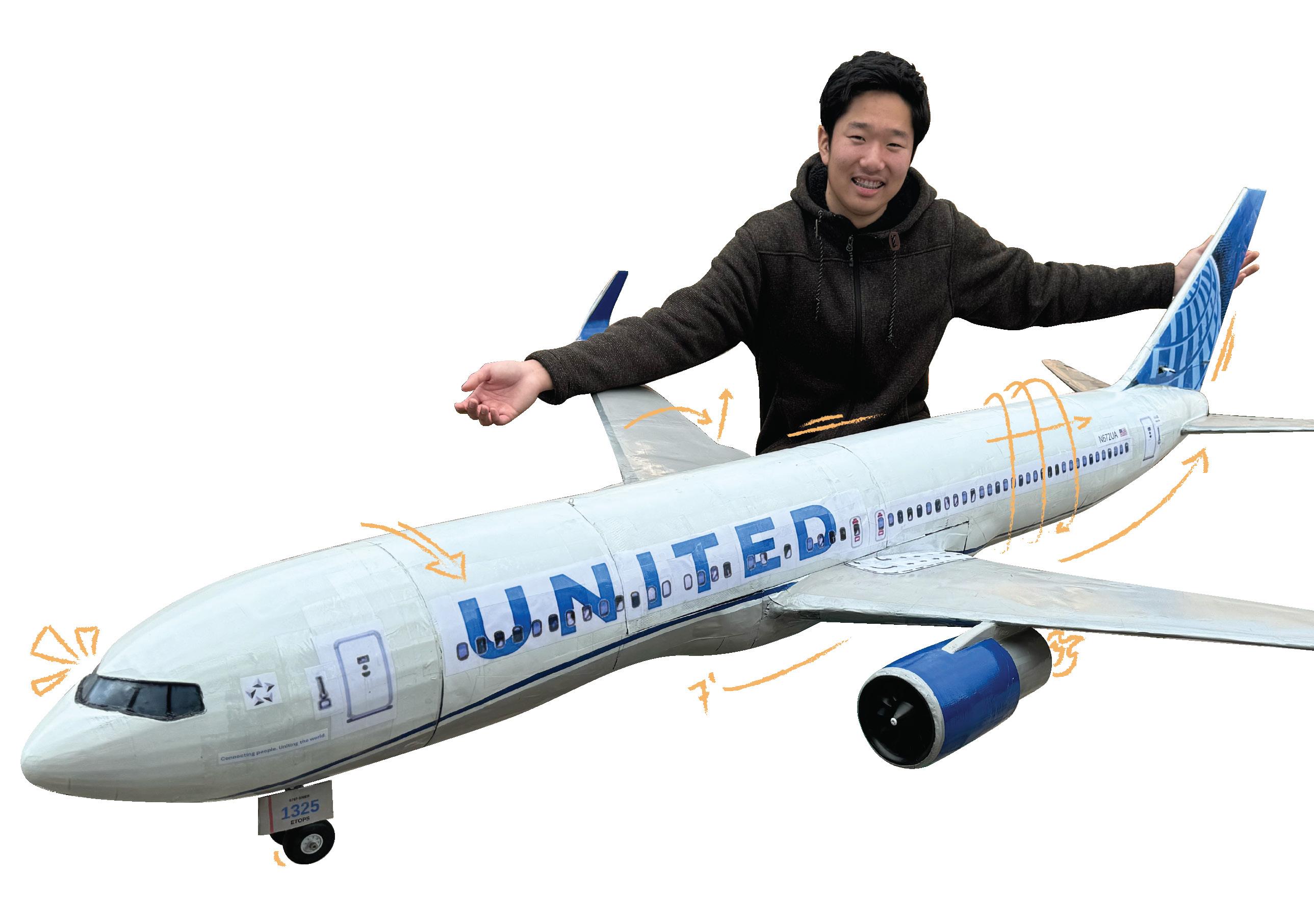

CATHY WU
postscript editor
The lingering scent of a heavy vapor reeks in crowded hallways and bathroom stalls, oftentimes neglected by people navigating through campus. Likewise, it is often easy to overlook the struggles students face during their teenage years.
relentless the addiction was and how difficult it is to quit […] so knowing that a lot of people start smoking at a very early age was shocking to me, and is something that I realized needed to be changed,” Cho said.
Despite having limited knowledge on the topic initially, Cho was eager to learn more about drug use among teens, developing a newfound passion for educating

the cause, Cho continues her ef forts to spread the anti-drug mes sage throughout the county.
Cho’s journey began in the eighth grade, when her teacher offered her an opportunity to apply for a local teen drug-prevention co alition consisting of other aspiring ad vocates. From the very beginning, she understood how prone peo ple are to addic tion, and that it is not exclusive to a certain demo graphic.
“I under stood just how
part of a bigger movement was what excited me, and that was what appealed most.”
As her interest grew, so did her efforts to collaborate with advocates from different schools, allowing her to hear perspectives from a larger group of people facing and addressing addiction. Being able to broaden her understanding of the issue simultaneously expanded her passion for it.
“
I THINK THESE [SMALL CONTRIBUTIONS] HELPED TO CREATE MORE OF THIS SYSTEMIC CULTURE CHANGE, AND THAT’S PART OF THE INITIAL GOAL TO SPREAD AWARENESS OF THE PROBLEM.
” GRACE CHO
both herself and others on the matter. Said Cho, “Just the idea of becoming

“Delving deeper into this movement, I was able to interact with other advocates through local conferences and whatnot [...]. I would be able to converse with people about their experiences and learn about how people in different areas often face an even bigger struggle,” Cho said.
Cho’s contributions only continued from there. Upon entering high school, Cho became the head event organizer for CHS’s Tobacco-Use Prevention Education Program and organized FUHSD’s first “Take Down Tobacco” Multimedia Competition.
This district-wide event served as a platform for students to submit artwork, writing and other forms of media, sharing their personal experiences or interpretations of the drug-use epidemic.
Cho believes that the competition is a powerful way to empower youth to share their perspectives. Said Cho, “A lot of people had these very personal and [...] very powerful stories, and I think this competition gives them the platform to be able to share and to be able to continue to spread awareness.”
On campus, Cho believes that minor changes can also make a substantial impact — for example, bringing resources to the Wellness Center and introducing drug-pre vention education direct ly to the FUHSD Board of Trustees. She hopes to provide a young person’s perspective on the matter and emphasize the importance of spreading the message within the student body.
“I think these [small contri butions] helped to create more of this systemic culture change,
and that’s part of the initial goal to spread awareness the problem and [...] hopefully initiate more conversation and ac tion around this issue,” Cho said.

Additionally, Cho be came an active member of the Santa Clara County Youth Advocate Advisory and the California Youth Ad vocate Network, both involving community-level advocacy proj ects aiming to raise awareness about substance abuse. She also advocated for the TUPE Tier 2 Grant, which was used to help local educational agencies implement effective tobacco prevention programs for students across Calare just as passionate, or just as willing to take next steps in this project.”
As her high school career comes to an end, Cho hopes oth-

EVELYN LIAO, JOYCE LEE, REBECCA WAWDA online sports editor | writer | online news editor
T- rade school
Typically lasting anywhere from six months to two years, trade schools are designed to prepare students for specific careers by teaching certain skill sets. These schools offer education and professional hands-on experience for specific traders, prioritizing students’ time — ultimately benefiting students’ future careers.
Trade school options range from culinary arts to criminal justice, providing applicants a variety of potential career paths. Some professions even require workers to attend and earn a diploma from trade schools, such as mechanics or barbers.
Students who attend trade school also have a higher guarantee rate of receiving a job, due to the high demand for skilled workers.
In contrast to a traditional fouryear college, trade schools are also known to be less stressful and slower-paced. Additionally, tuition is considerably more affordable, with the average trade school tuition ranging around $15,000 rather than the average four-year college tuition of $43,505, making trade school a preferable option for some students.
Cupertino High School’s college counselor Wendy Amick provides students guidance on post secondary education.
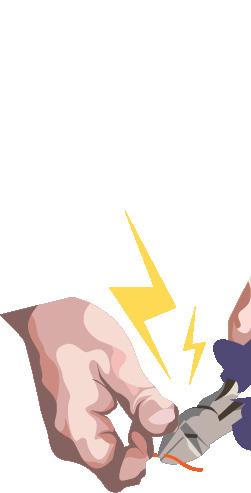
to help them research different trades that they might be interested in,” Amick said.
THOSE GREAT WITH THEIR HANDS, AND ARE MORE INTERESTED IN THAT TYPE OF A FIELD, IN DOING PROJECTS, WORKING ON CARS, THOSE TYPES OF THINGS. THAT’S THE GREAT THING ABOUT DIFFERENT PATHS OF TRADE SCHOOLS. ” WENDY AMICK
“I have conversations with people who are pursuing [trade school]. We investigate different trades that are available. The unions that are out there, contact information, that sort of thing,” Amick said. Students also have access to resources such as pamphlets and online resources like Naviance. Naviance is a platform made for high school students to help them plan for college and careers. “We
For those who are less interested in pursuing education in a classical setting, trade school can lead to greater success, with the curriculum mainly focusing on hands-on work.
“I think it’s a great option for many people,” said Amick. “Those great with their hands, and [who] are more interested in [...] projects, working on cars, those types of things. That’s the great thing about [the] different paths of trade schools.”
Unfortunately, trade school faces an unfair stigma and is often considered “inferior” to traditional four-year colleges, discouraging students from pursuing trade school. Trade schools are often designed for students to pursue a blue-collar career, which are commonly looked down upon due
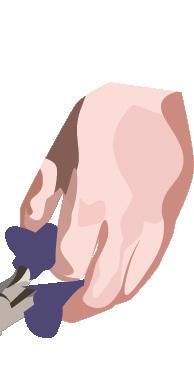
to factors such as low income. Contrary to these beliefs, trade schools do offer job opportunities that lead to higher-level positions, challenging the stereotype.
“You can make [...] over six easily, and espethose that are in the trades,” said Amick. “So immediately out the gate, you’re making money. So you work as an apprentice, you go along, and then you become a journeyman, legitimate levels, and a journeyman continues to work and get experience on the job. Then again, you’re making money, instead of paying money to go to college or getting loans out to pay for that.”
While only about 10% of seniors at CHS do decide to take a non-college path, which includes attending trade school, the post-secondary education that a student pursues ultimately depends on the student’s individual learning habits and personal development. Said Amick, “It’s a great path for the right person, just like college would be a great path for the right student.”
Military/ROTC
Instead of attending a fouryear college, students can apply to one of the five federally funded military academies in the United States — U.S. Military Academy, U.S. Naval Academy, U.S. Air Force Academy, U.S. Coast Guard Academy or U.S. Merchant Marine Academy. Military acade-
mies combine traditional training with an academic program for the cadet’s chosen major. Tuition is free and upon graduation, cadets must serve eight years in the military — five years of active duty and three years of reserve — starting as a second lieutenant, the entry level rank for military officers.
Senior Angela Choi was influenced to apply after she attended the Summer Leaders Experience, a week-long summer camp hosted by Military Academy cadets to provide potential applicants with an introduction to living at West Point. West Point doesn’t offer fraternities or sororities — instead, students view one another as extended family.
“[...] I think one thing that really drew me into actually applying and deciding to go there was the sense of community and the fact that even though [my squad] didn’t even know each other that well, everyone was supporting each other,” Choi said. “That kind of environment was really something that I look forward to in any place I go, and West Point was that one place that had all that.”
“
CHS encourages students to apply to a military academy. Army Reserve recruiters visit each spring and pamphlets for various academies can be found in the college and career center. However, because applications for military academies differ greatly from four-year college, requiring both a nomination from an authorized nominee and a physical fitness and medical examination, CHS is unable to provide as much infor-
mation on applying to a military academy as it is for a four-year college.
“I was good on my own. I think as long as people were there to answer questions when I had one, I think that was good enough for me, but [...] that’s also because I did a lot of research beforehand,” Choi said. “[...] If I were to just go straight into the application without any prior knowledge to how the whole system works, I think I would have struggled a lot.”
ANGELA CHOI ” THAT KIND OF ENVIRONMENT WAS REALLY SOMETHING THAT I LOOK FORWARD TO IN ANY PLACE I GO, AND WEST POINT WAS THAT ONE PLACE THAT HAD ALL THAT.
Aside from the application process, living and learning at military academies is also vastly different from that of a four-year college. Cadets follow a strict and rigorous schedule, engage in different pathways within their education and adhere to rules regarding their social and romantic lives. Aside from taking classes for their majors, which students pick after their second semester, cadets also learn to become soldiers and officers through courses that teach weapon familiarization, land navigation, military protocol and tactical problem solving. Said Choi, “I think the most different part is just the commitment [...] during the school year and after you graduate. [...] During the summer before you go into a new grade, you have to go through different trainings. So this year, when I go there for the first time, I have to go through a six week basic training. [...] In other colleges, you don’t take PE, but at West Point you have to take swimming classes and self defense and all these
PE courses. And then there’s also military science courses I have to take.”
Choi also encourages fellow CHS students to apply.
“[...] I think the application process is [...] a really good experience,” Choi said. “All that work you have to go through is something that will be an important part of your life.”
Aside from attending a military academy, students can also choose to enter the Reserve Officer Training Corps program at a university that offers it. ROTC covers tuition, but students must balance military training with school work and serve eight years immediately upon graduation.
Students can also join the military directly. Individuals are required to have a high school diploma, pass a fitness test and be a U.S. citizen.
Additionally, some foreign countries require mandatory military enlistment, training and service. For example, all male Singaporean citizens are required to enlist upon turning 18. For senior Jasper Khoo, that means forgoing his first two years of college for military training and service.
“I would start [enlistment] in November, but I’m planning on enlisting
earlier so that I can finish in May or June, so that I can attend college after my enlistment is over,” Khoo said.
Khoo had conflicting choices on when to apply to college, but ultimately settled on applying during his senior year, along with the rest of his classmates.
“[...] After talking it through with my parents, I decided to apply and then ask the colleges for a two-year deferral if I got in, which has worked decently well so far,” Khoo said. “I think the application part is mostly the same. I still have to write the same essays and pay the fees and all that. But I think the difference is what happens after I get a decision. I have to contact the school and [inform them] about my predicament and then sort it out from there.”
Singapore is one of the few countries that requires enlistment immediately upon high school graduation. It is uncommon but not unheard of for CHS to aid a student in Khoo’s situation.
Said Khoo, “I don’t think there’s much else [CHS] could have done, because I think they already provide a lot of resources for just applying to college, which gives me more of a security after my enlistment period has ended.”
Despite the differences between his enlistment plan and the more traditional four-year college pathway, Khoo emphasized the opportunity to learn self-discipline and self-reliance.
“I think the biggest thing is that I’ll be older, which I think would help,” Khoo said. “Maybe [I’ll] mature more,
and also in the sense that maybe [I’ll] have more time to process [and] learn information.”
Military training often provides cadets and students with strong character development and leadership skills, making military academies and enlistment an optimal path for some CHS students.
Another popular alternative to a four-year university after graduating from high school is attending community college — two-year programs where students can earn an Associate of Arts or an Associate of Science degree. The California Community College system, consisting of 116 colleges, is the largest system of higher education in the United States.
According to Wendy Amick, Cupertino’s College and Career Advisor, almost 20% of Tino students attend community college. The affordability and flexibility of community college offers many benefits to students, especially to those who are unsure about their future career paths.
Kaitlyn Lam, a 2021 Tino alumna, earned four associate degrees from De Anza College from 20212024. She is currently studying at the University of San Francisco, soon to be graduating with a Bachelor of Science in Kinesiology.
Said Lam, “I started out my senior year while in lockdown. I felt that there were a lot of changes going on and that I wasn’t ready to take that step to move out away from family. [...] And even without applying, I knew I was uncertain with which major I wanted to go into.”
Ryan Yi, who graduated from CHS in 2024, made the decision to attend community college early on. As part of Tino’s Advancement Via Individual Determination pro-
gram, he received guidance from mentors in his decision-making process for higher education.
“My primary reasons for choosing community college [were] due to financial issues in both short and long term,” said Yi. “Short term, I wanted to attend college without straining my parents too much [...].
Long term, I wanted to save money for the school I’m transferring to so I can [take] all the necessary
so I ended up taking classes with the same groups of people for most of my time there.”
The California Community College System also offers opportunities to transfer to Cal State Universities or Universities of California. Students can earn an Associate Degree for Transfer and either apply through the Transfer Admission Guarantee program, where students can receive guaranteed admission to select schools should they meet the GPA requirement, or through the UC transfer application.
“ INSTEAD OF FEELING LIKE YOU’RE COMPETING WITH YOUR PEERS, EVERYONE WORKED TOGETHER TO HELP EACH OTHER TRANSFER TO A GOOD COLLEGE.
ELAN TRAN
”
classes at De Anza for free while also saving up money through part time [work].”
De Anza College’s Promise Program allowed Yi and many other full-time students to attend community college for their first two years free.
Though De Anza, like most community colleges, does not offer on-campus housing, students are able to find community through student organizations and classes. Yi is currently part of De Anza’s student government, and 2022 Tino graduate and current University of California, Berkeley student Elan Tran was part of De Anza’s Medical Outreach Association.
“However, in my personal experience, I made most of my friends through classes,” said Tran. “As a Biology major, we were required to attend labs in person for most days of the week in order to fulfill our transfer requirements,
“The application process can feel pretty stressful, and it kind of felt like I was going back in time to senior year college apps, but I think the community college environment was very different from high school — especially Tino,” said Tran. “Instead of feeling like you’re competing with your peers, everyone worked together to help each other transfer to a good college. We peer reviewed each other’s essays, worked together to find good extracurriculars and studied together to make sure we all did well in classes.”
Students can also apply to transfer to a four-year private institution after one or two years of community college. These students complete a transfer application, and the credits from courses they took in community college can apply to a degree at their new institution.
“I only applied to private schools because I was overwhelmed with my responsibilities during the fall quarter at De Anza and private schools set their transfer application deadlines at around February [or] March, at least a month after the CSU and UC deadlines,” said Lam.
“Since I didn’t choose to go the CSU and UC route that De Anza’s pathway would have offered, I had to research a lot on each school’s deadline, and their required materials.”
The transfer application process required Lam to utilize several platforms such as the Common Application and Scoir, and to ask professors for a letter of recommendation.
“College is different from high school where most professors have little incentive to get to know you, and the responsibility is yours to reach out to get to know them,” said Lam. “I was fortunate to have a few professors that I connected enough with that agreed to write my recommendation, but this is a difficult task because as a new student, you’ll likely only have had this professor one time, and it’s hard to make your presence known within a 12-week quarter.”
From flexibility to afford- ability, community college provides numerous benefits for students of all
pathways towards a higher education
Diving deeper into the scoring within the subjective sports of gymnastics, dance and cheer
ROSA LEE, HAILEY RYU
social media manager | writer
Although scores in athletic competitions are typically determined by numeric scales, such as goals scored or the duration of a lap, some sports cannot be scored using conventional methods. Specifically, gymnastics, dance, cheer and figure skating utilize subjective scoring, in which scores are influenced by judges’ opinions on the athletes’ performances.
Cupertino High School competes in several artistic sports, including dance, cheer and gymnastics. For all three of these sports, athletes are judged based on various criteria, including the difficulty and visual appearance of their routines. However, the consistency of these criteria can differ based on the judging panel on a specific day or event. For example, judges may disagree on the impact of a performance due to the subjectiveness of rating a performer visually. Preferences for certain themes can also impact placements; for example, some
judges prefer bold, energetic performances whereas others value calmer shows.
In the case of gymnastics, an ath - lete’s ultimate score is a superscore compris - ing the individual difficulty and execution points, minus any neutral deductions. Neutral deductions
scored on a perfect 10 scale, with points being deducted for missing skills or faults, but with minimum difficulty requirements.
In the recent Paris 2024 Olympics, the gymnastics event incited controversy surrounding Jordan Chiles and her placement. Chiles, a 23-year-old American gymnast,

are unrelated to the performance itself and occur when a gymnast makes a technical violation, such as stepping out of bounds. The execution score is judged on a scale of 10 points. Similarly, the difficulty score is a sum of the point values of each move in a performance. Moves can range from 0.1 to one point; the more demanding and complex the move, the more points attributed to it in professional gymnastics. At the high school and collegiate level, gymnasts are
originally finished fifth in floor exercise. Later, her coach pointed out an error in evaluating the difficulty of a move in Chiles’ routine, increasing her score from 13.666 to 13.766. This rise of 0.1 points bumped Chiles’ position onto the podium from fifth to third place. However, after much discussion and debate amongst the judges, Chiles had her score reverted back to 13.666 and lost her imminent bronze medal. Chiles experienced immense
emotional turmoil due to this erroneous judgment. Although gymnastics scoring does rely on a structured set of difficulty and execution points, the judges themselves have the final say regarding the small details of a performance.
Similar to gymnastics, cheer performances are scored on several components, such as stunts, choreogra - phy, jumps and tum- bling. Typi -
cally, each category is scored on a scale from one to 10, and each is weighted differently
ously. Since placements will likely never be completely accurate, the
only way for teams to ensure consistent results is to prac-
based on difficulty level. A team’s total score depends on the scores of all individual judging categories and the team’s penalty points, if any.
Cheerleader Elly Huh, member of CHS’s varsity cheer team, explained that the diverse standards of judges can lead to placements that are not reflective of a team’s true execution and efforts.
Said Huh, “I’m sure different judges have different biases, but the important thing is that each judge looks for something different. While you can impress one judge, another might not be as satisfied with the performance.”
Despite the flaws of subjective judging in cheer competitions, facing unfair or prejudiced rulings can motivate teams to train more rigor-
tice diligently.
“When you compete, there will always be times where you are scored inaccurately, but it helped our team to work harder and grow together,” Huh said.
Having a stronger similarity to the system used when scoring for cheer rather than that of gymnastics, dance is judged on assorted criteria including choreography, execution and performance.
Dance is considered both an art form and a sport, combining the athleticism of any other sport and the artistic freedom of expression. Because artistry is an essential part of dance, the personal preferences of judges play a major role in determining a dancer’s fate.
A typical score sheet is divided into categories such as choreography, which assesses style, movement and visual impact; execution, which evaluates technique and movement quality; and performance, which is judged based on a dancer’s showmanship. Each of the four categories is weighted differently depending
on the competition, but all routines are scored petitions they competed in, but they took home second place at nationals.
Like many other sports, outside factors and biases can affect scoring as well.
Said Kim Caldwell, longtime coach of the Golden Spurs Dance Team at CHS, “The biggest thing is to try to keep your opinion out of it and go based on only what
“THE BIGGEST THING IS TO TRY TO KEEP YOUR OPINION OUT OF IT AND GO BASED ON ONLY WHAT YOU SEE AND ALSO NOT COMPARE ONE TEAM TO THE NEXT. [...] I THINK SOMETIMES SOME JUDGES JUDGE BASED ON, ‘OKAY, THIS SCHOOL ALWAYS PLACES SO THEY MUST BE REALLY GOOD, AND SO THAT MEANS I NEED TO SCORE THEM HIGHER,’ WHERE THAT MAY NOT BE THE CASE.
” KIM CALDWELL
you see and also not compare one team to the next. [...] I think sometimes some judges judge based on, ‘Okay, this school always places so they must be really good, and so that means I need to score them higher,’ where that may not be the case”
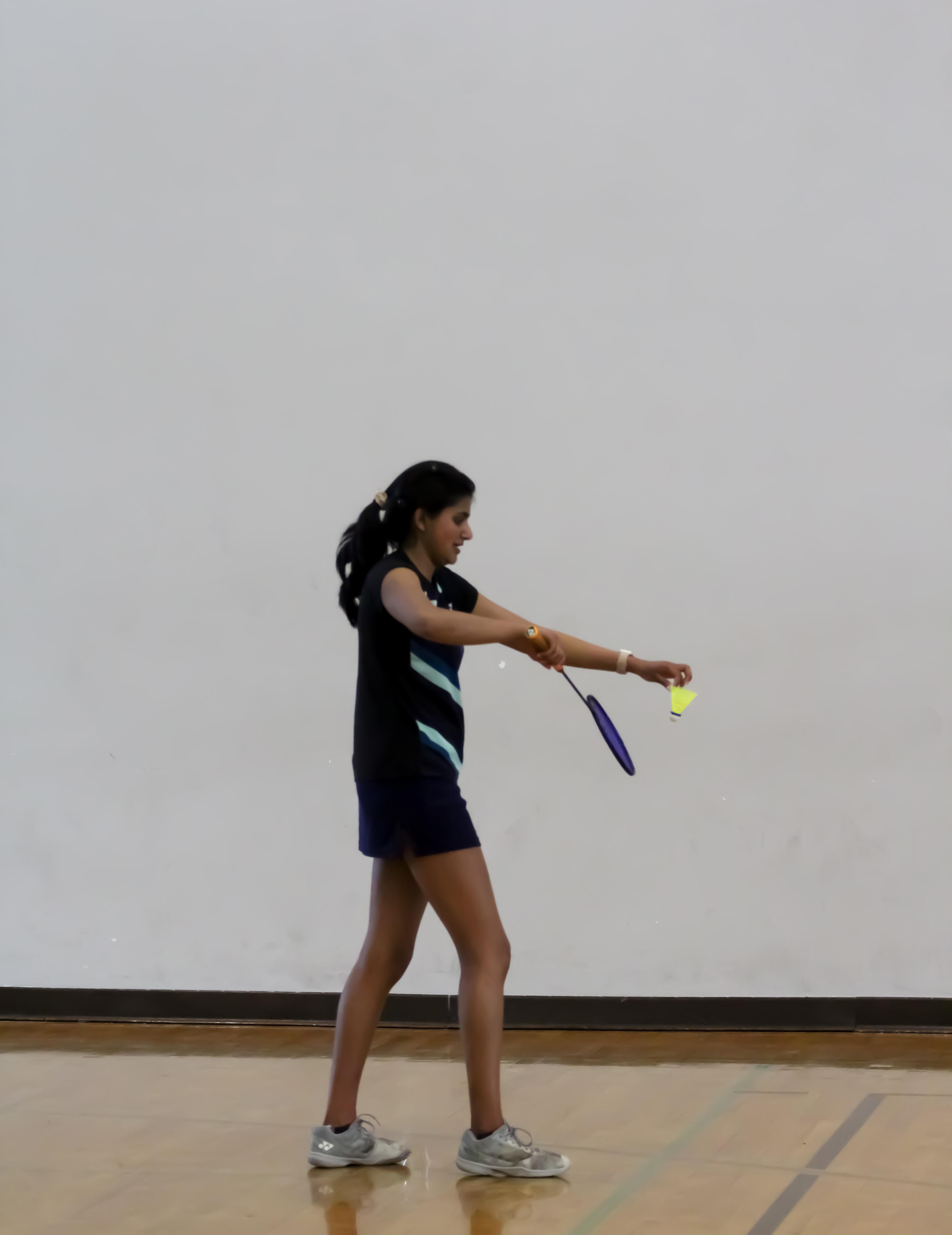
Exploring Bharadwaj’s journey as a nationally ranked badminton player
AARON LUC
spotlight editor
Under the bright stadium lights, Prutha Bharadwaj grips her racket, eyes locked on the shuttlecock as it soars towards her. With a swift smash, she sends it flying past her opponent.
At just 16 years old, Cupertino High School junior Prutha Bharadwaj is already playing badminton on the world stage. Ranked top 20 in the entire country for her age group, Bharadwaj has played for the United States, contributing to the team earning a bronze medal at the 2022 Pan American Championships. Her skills have also helped Cupertino place high in many badminton tournaments — she placed fourth at the Central Coast Section finals in freshman year and brought home fifth place in sophomore year.
Bharadwaj was introduced to badminton early in her childhood and quickly developed a passion for both playing and watching the sport.
“My dad used to bring me to watch my sister play during her practices, and while waiting for her to finish, he used to play with me. Playing with my dad and his friends made me fall in love with the sport,” Bharadwaj said. From then on, she continued to practice consistently in pursuit of greatness.
At such a young age, Bharadwaj’s skills are nothing short of astonishing. However, they come with a cost. Throughout her childhood, she often had to make sacrifices to pri-
oritize her training.
“Some of the biggest challenges were missing out on birthday parties, hanging out with friends or even taking vacations. I had to remind myself that I had different goals and going to practice was more important,” Bharadwaj said. Additionally, Bharadwaj faces struggles with a loaded schedule. On a typical day, she wakes up at 5:30 a.m. to finish her homework. After school, she immediately has badminton practice until nighttime, where she squeezes
“
MY DAD USED TO BRING ME TO WATCH MY SISTER PLAY DURING HER PRACTICES, AND WHILE WAITING FOR HER TO FINISH, HE USED TO PLAY WITH ME. PLAYING WITH MY DAD AND HIS FRIENDS MADE ME FALL IN LOVE WITH THE SPORT. ”
PRUTHA BHARADWAJ
in a little more homework before going to bed. For a young athlete, prioritizing sleep is a necessity.
Said Bharadwaj, “I find that taking breaks when needed is important. [...] On days I don’t have practice, I try to use my time efficiently by finishing more work, but also prioritizing rest by taking short naps.”
Despite how much of a commitment it is, Bharadwaj believes that playing badminton is truly rewarding.
“Winning a bronze medal at the Pan-American games has definitely been the most memorable experience. It was my first international tournament, so that itself was a major achievement in my mind, but to win a medal felt even better,” Bharadwaj said.
Bharadwaj is inspired by badminton professionals such as Tai

Tzu

Ying, the women’s singles silver medalist in the Tokyo 2020 Olympics. She is also extremely grateful for her coaches and supporters.
“My coaches have definitely shaped my journey, and I wouldn’t [be] here without them. They taught me work ethic and how to problem solve, as well as how to play badminton,” Bharadwaj said.
Bharadwaj’s love for the sport empowers her even in the toughest, most high-stakes situations.
“I make sure I warm up well and talk to myself. I have to remind myself of all the hardships I faced at practice and keep telling myself that I just have to try my best. If I start worrying about the outcome, I put unnecessary stress on myself, making it harder to play,” Bharadwaj said.
Today, Bharadwaj’s goals and aspirations continue to grow. She hopes to qualify for her second Pan-American Championship and win more tournaments for Cupertino at both a regional and state level.
Although Bharadwaj has faced countless challenges throughout her journey, she stays positive, as she loves her sport and would not trade it for anything.
Said Bharadwaj, “Work hard, but at the same time, don’t get too competitive. By only focusing on competing, you forget to have fun, which is the main reason you started the sport in the first place. Enjoy the time you have on court and with your teammates, as they are the people you are likely to be friends with forever”

ANGELA KIM, KATIE MAK
online opinions editor | sports editor
When did exhaustion become a flex? From students finishing last-minute essays to studying for exams all night, pulling all-nighters has become a cultural norm. But what is the cost in terms of a student’s health and well-being?

In today’s world, exhaustion has become a badge of honor. Students often brag about pulling all-nighters to finish essays or cram for exams, wearing their lack of sleep like a medal. This so-called “grindset” lifestyle promotes the idea that success is achieved from sacrificing sleep. The mindset shifts
Examining the rise of all-nighter culture and the
the focus from genuine hard work to performative success, prioritizing appearances over actual effort. This lifestyle also influences the idea that it is not important to have a strong work ethic or work harder, prioritizing proving “success” to others through little effort.
Oftentimes, many students feel a sense of pride after staying up all night, as if they have accomplished something extraordinary. The notion that pushing through exhaustion makes someone more dedicated or hardworking is present everywhere — from social media to casual conversations in the school hallways.
“There’s only so many hours in the day and if you’ve got extracurricular activities and family things or work, it doesn’t leave a whole lot of time for studying. So if the temptation is to really get the grade you want, or to really understand the material to the point where you’ll
be able to do well on a test, then more is better,” Cupertino High School’s school-based therapist Denise Salin said.
However, not only is this mindset emotionally unhealthy for teenagers, it also disregards the serious health consequences of sleep

deprivation. Because all-nighters have become increasingly common among students, it is vital to understand both the immediate and long-term effects that sleep deprivation brings.

real cost of prolonged sleep loss
“There’s all the side effects of not getting enough sleep, it impacts your memory, your concentration, your focus. We also know that chronic loss of sleep can lead to physical problems, like increased blood pressure, heart disease [...] and anxiety or depression,” Salin said.
Johns Hopkins pediatrician Michael Crocetti, M.D., M.P.H. — students begin to see the impacts of sleep deprivation in day-to-day actions, such as reading an excerpt or paying attention in class.
“A lot of times, students won’t tie it to sleep, but they’ll come in and say [...] ‘I don’t know why I can’t concentrate.’ I’m rereading the same paragraph time and time again [...] or I find that I’m sitting in class and all of a sudden I don’t know what the teacher is saying, and I don’t know what we’ve been doing for the last 15 minutes. [...] The more I talk with students, we can trace a lot of it back to not getting enough sleep,” Salin said.

Sleep is crucial for the brain development and emotional regulation of teenagers. Without the recommended nightly nine to 9.5 hours of sleep — according to
In addition, consistent sleep loss from all-nighters contributes to burnout, a state of physical and mental exhaustion due to overwork and accumulated stress. Studies show that less than six hours of sleep a night is a key contributor to burnout.

dents to shift their focus towards healthier habits, such as time management and prioritizing rest, ultimately striving towards an improved lifestyle. After all, success is not about how little sleep one gets, but how productively one works while maintaining well-being and health.
“ ”
A LOT OF TIMES, STUDENTS WON’T TIE IT TO SLEEP, BUT THEY’LL COME IN AND SAY, YOU KNOW, GOSH, [...] I DON’T KNOW WHY I CAN’T CONCENTRATE. [...] THE MORE I TALK WITH STUDENTS, WE CAN TRACE A LOT OF IT BACK TO NOT GETTING ENOUGH SLEEP. DENISE STALIN

Instead of celebrating sleep deprivation, it is crucial for stu-

The real flex is not pulling all-nighters — it is learning to balance work and sleep effectively that should be admired
Exploring how love song dynamics have drastically shifted and the impact this has on listeners
NIMRIT GANDHI
social media manager
From cute and heartfelt love songs that encapsulate true feelings of admi ration to songs cod ed with insinceri ty and inappropri- ate lyrics, love songs have undergone a drastic change over the years. Love ballads have gone off the rails, shifting younger audienc es’ perspectives on romance and sexual behavior.

creased by a shocking 883% since 2001, according to a study conducted by Mark Bannister using Spotify Application Programming Interface data. Additionally, about 40% of the top Billboard songs contain sexual lyrics, demonstrating how explicit songs have overrun the charts. Some artists who have followed this trend and gone from
Songs such as “Put Your Head On My Shoulder” by Paul Anka and “Can’t Help Falling in Love” by Elvis Presley are classics known for their profound romantic expression. These songs were sung with pure sincerity and ad oration, stemming straight from the heart. One famous line from Presley’s song is, “Take my hand, take my whole life too, for I can’t help falling in love with you.”
However, as artists started to change their style of music around the 1960s, sexually explicit songs became more prevalent in an attempt to appeal to the interests of younger audiences. According to a report by the American Psychological Association divisions, song lyrics in 2009 were three times more likely to contain sexually explicit lyrics than in 1959. Genres such as rap and hip-hop that tend to portray explicit themes have replaced the sincerity that old love songs used to portray, growing in popularity and topping the charts over time. Explicit songs have in-

“ I THINK THE DANGER IS FOR YOUNG PEOPLE TO SAY, ‘OH, MY RELATIONSHIP IS SUPPOSED TO BE TOXIC. I’M SUPPOSED TO BE UNHAPPY HALF OF THE TIME.’
JESSE WASHINGTON
Mars, Sam Smith and Sabrina Carpenter. This newer style of music that has become more popular over the years lacks the tone of endearment that love songs used to
portray. Examples of newer songs that reflect this drastic change are “Juno” by Sabrina Carpenter and “Unholy” by Sam Smith. This type of music spreads quickly through social media, exposing younger audiences to sexually explicit lyrics and videos. This exposure is associated with increasing sexual attitudes and intentions such exposure to
inappropriate music can increase the likelihood of early sexual activity. These effects can be severely detrimental to adolescents’ perceptions of romance, as the true value of love is easily neglected and overlooked. However, turning towards sexually coded music runs deeper than trying to appeal to the interests of younger audiences. Especially among women, talk of sexual activity was often shamed — a barrier that music was able to overcome by
normalizing such topics in songs. Directing music towards explicitly coded lyrics helped normalize so cietal norms and expectations that revolved around sexual ideals. It promoted a form of authentic self expression as a way of breaking free from the shame that was as sociated with women and sexual activity, holding positive and em powering influence to listeners.
Music is an influential source that people have used to navigate the world and form opinions for de cades. Howev er, this influ ence can often have a neg ative impact — lots of new - er, more explicit music promotes the nor - malization of toxic relationships. Genuine lyrics about fondness and adoration are rarely found in the love song genre, and instead the negative aspects of relationships are honed on.


remember how much [music] affected me. What is normal? What is acceptable? I think the danger young people to say, ‘Oh, my relationship is supposed to be toxic. I’m sup posed to be unhap py half of the time.’ I quick spin through the current Billboard top 100, and it’s just more of the same.”
they hold in younger generations. Rather than

Said writer Jesse Washington on National Public Radio, “I
Music has a large impact on listeners, and gaining exposure to unhealthy topics discussed in songs may shape Gen Z’s dating behaviors. This can drastically alter communication and relationship styles. According to an article by News Medical, exposure to sexual music lyrics is tied to risky sexual behaviors, unintended pregnancies and a higher risk of getting a sexually transmitted infection in adolescence. Additionally, synthetic and hollow ideals such as casual relationships and talking stages are often normalized in love songs, which may be linked to the prominence that

the values of com- mitment and loyalty that love songs used to focus on, the dynamics of love songs have drastically evolved, affecting young peo ple’s per - ceptions of romance and their behavior in relationships.namics of love songs have drastically evolved, affecting young peo- ple’s perceptions of romance and their behavioral approach to relationships
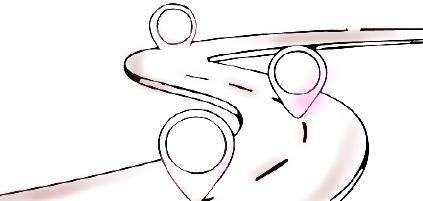

Which flower represents each Prospector staffer the most?


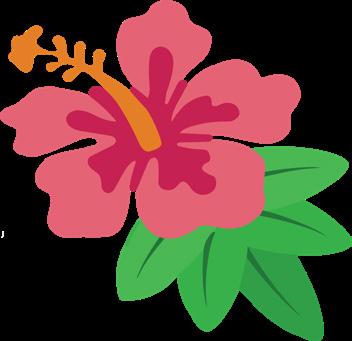
















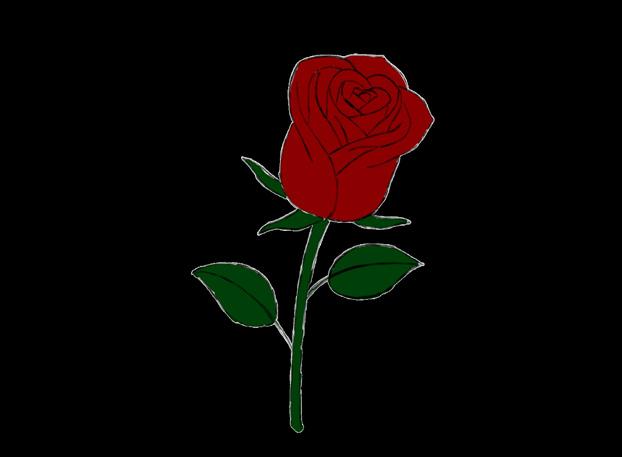




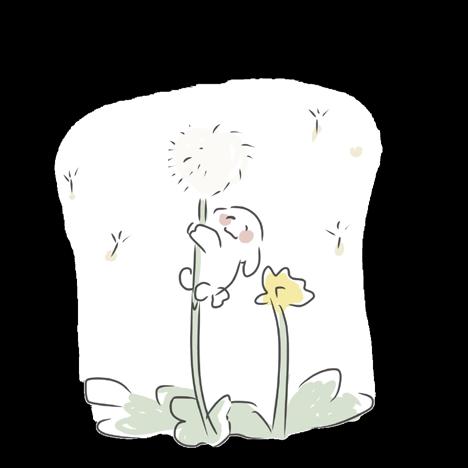












Did you find all six hidden shamrocks in the magazine?




Redefining success and purpose as a generalist in an environment that values specialists

BENJAMIN LIU writer
Jack of all trades, master of none,” my coach said. I felt adrift, not just from the two grueling hours of water polo swim conditioning, but from something deeper.
It was as if I was endlessly treading through an ocean teeming with life, yet never able to pause, rest, or reach solid ground.
And I was drained.
Throughout my childhood, I’ve dabled in seemingly random activities—roller skating, chess, painting, calligraphy — never staying in one place for too long. I carried this habit into high school, feeling that there is so much that I’m interested in. I dive in, get decent, then move on. Yet, I sometimes wonder, will not being the best at one thing hold me back?
As my workload increased, I had to drop many activities, yet quitting always made me feel like a failure. However, I never stopped exploring new interests, but each switch came with a reality check as society pushed us to fit into a single mold as early as possible. With college admissions looming over me like a constant shadow, I’ve always felt the pressure to define myself and struggled to stand out with my efforts spread thin across many interests. I kept asking: Why do I matter? Who am I?
I was envious of those with flashy achievements in one specific field and regretted my decision not to stick to one.
Despite the initial struggle, I’ve come to notice the advantages of being a generalist. My ability to draw from diverse experiences has allowed me to merge disciplines in
unexpected ways.
For example, while creating a digital animation campaign for a drone business model, I blended my past hobbies. My interest in film helped me craft an engaging story and scenery, while my background in 3D modeling and engineering enabled me to create realistic drone models. Even my love for anime played a role, allowing me to select an exhilarating soundtrack that heightened the ad’s emotional impact.
My experiences in journalism, art, leadership and game design have also intersected in unexpected ways, especially while leading my special-needs Scout troop. One example was a mural project I led, where my painting skills shaped the design, and interactive games kept the scouts on the autism spectrum engaged. Later, I used my journalism skills to raise awareness by publishing an article about the project.
Although blending these different fields felt so natural when doing it, I would never have imagined their real-world application. As I considered my perspective, I saw it as a stained-glass window, with each life experience adding a unique piece of colored glass. Some mosaics have fewer pieces, shining brightly in one area, while others are intricate, spreading light in many directions. We often fear that the light our window casts is not as bright as others, but all of us cast a different shade. It is precisely the differences in shades that truly matter, as they are the unique perspectives and ideas we each contribute that come together to illuminate the world’s future. Sometimes, how brightly each of us shines is simply a matter of time.
Some might call a generalist a weakness, a lack of depth. But I’ve grown to see it as my greatest strength. I’ve built a broad knowledge base, an ability to adapt and
a knack for self-learning.
It’s impossible to connect the dots looking forward — only in hindsight do they reveal their intersections. But every skill we pick up, every challenge we take, and every perspective we gain will blend into a big picture that would only make sense looking back, despite how random they seem in the present. For the longest time, I thought success was to be the best at one thing. But after jumping around different interests, I’ve realized success is also about connecting different ideas and creating something new. My journey won’t look like everyone else’s, and that’s the whole point.
“A jack of all trades is a master of none.” At the time, My water polo coaches’ words stuck with me. But months later, I came across the full version of the quote:
“A jack of all trades is a master of none… but oftentimes better than a master of one.”
I believe that. I used to feel like I was endlessly treading water, surrounded by possibilities yet unable to reach solid ground. But I’ve come to realize that I was never meant to stay in one place — I was meant to swim. The ocean that once felt overwhelming now feels like an open horizon. I now embrace every current, knowing that each stroke forward shapes who I am. I’m not going to stay afloat, instead, I’ll keep moving, charting my own course

FOLLOW OUR SOCIALS
WEBSITE: CHSPROSPECTOR.COM
INSTAGRAM: @CHSPROSPECTOR
SPOTIFY: THE PROSPECTOR PODCAST
FLICKR: @THECHSPROSPECTOR